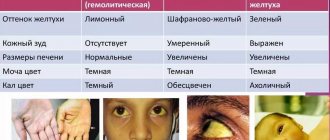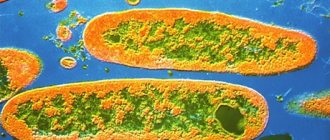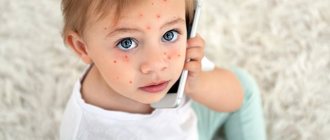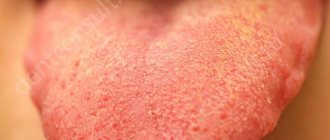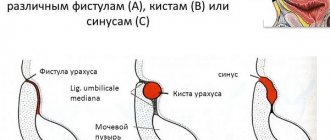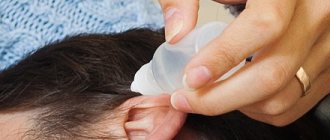One of the widespread, but not yet thoroughly studied skin diseases is molluscum contagiosum. This is a viral skin lesion that often occurs in children (especially from 1 to 5 years), less often in adolescents and adults, and which is often unfairly ignored, considering it banal pimples, warts or “allergies.” Meanwhile, this infection is quite contagious for people susceptible to it.
The disease received the name “mollusk” because, under high magnification in a microscope, particles of affected tissues with the virus outwardly resemble the shells of mollusks and snails. Contagious - because it is a contagious (contagious) viral disease that affects the skin. It is not dangerous to life and health in most cases, but it can cause the patient cosmetic, physical discomfort or some restrictions in normal life.
Cause of illness
The causative agent is the molluscum contagiosum virus VKM (MCV in English) of the poxovirus family (Poxviridae), also called Molluscum Poxviridae. The virus is more active and more often affects children due to immature immunity and structural features of the skin, but it may well settle on the skin of adults. In total, today there are 4 types of viruses, and all of these viruses cause skin damage with typical elements:
- Types 1-2 - more common in adults or adolescents of a sexually active age, they are mainly transmitted through unprotected sexual contact.
- Types 3-4 of the virus are more typical for children and are transmitted mainly through household contacts.
Approximately 80% of all patients with this infection are children, and:
- Children under one year of age do not suffer from this infection due to innate immune mechanisms,
- from one year to 4-5 years - cases are most often recorded
- between the ages of 5 and 14 years—infection occurs less frequently
- from the age of 15 years and in adults, genital forms of molluscum contagiosum are more common.
The virus belongs to DNA-containing viruses, therefore, it is difficult to form immunity and can be contained in the body of children or adults for a long time without giving symptoms. The virus can become more active and begin rapid development when the immune system is weakened or in the presence of provoking factors:
- serious illnesses
- immunodeficiencies, HIV
- oncological pathology
- long-term treatment with hormonal drugs
- skin lesions
- tattooing
- hormonal imbalances or changes (pregnancy, etc.)
Molluscum contagiosum is often confused or combined with another skin disease - the human papillomavirus, which also produces new growths on the skin such as warts and growths. The peculiarities of the mollusk are the uniform type of rashes and the absence of formations in the area of the palms and feet of children and adults.
Symptoms
Initially, single nodules appear on the body, then new ones appear nearby - the faster, the weaker the child’s immunity. How quickly the nodules grow in size also depends on the body's resistance.
Apart from the fact that the disease manifests itself as a rash, no other symptoms are observed, including hyperthermia, weakness, or loss of appetite. Sometimes patients note slight itching in the area of the rash. If the formation is damaged, for example by scratching, a secondary bacterial infection is likely to spread.
How can you get infected?
The virus and its properties are still under study, so it is not known for certain how long the virus itself can be infectious and how long the rash will be dangerous for others, therefore, today it is believed that the presence of a rash a priori makes a child or adult infectious and dangerous to others.
There is still no consensus among domestic and Western scientists about this virus, except that it is transmitted through household contact, that is, from person to person through direct and indirect contact. This is what once again emphasizes the importance of having personal supplies - towels, linen and hygiene products.
Molluscum contagiosum is a typical human disease; animals cannot get it or transmit it to people, therefore:
- You can become infected either directly through contact with the skin of a sick person
- or from his personal belongings and objects that he touched and on which viral particles remained
- Infection of the population with it is increased in a warm climate zone with a humid climate
- in areas with high population density, poor healthcare and unsanitary conditions (close and frequent contact conditions between children and adults, as well as non-compliance with basic hygiene rules)
On average, the virus “sits” in the skin for 2 to 8 weeks, which can be considered a kind of incubation period for molluscum contagiosum.
What increases the risk of infection?
- Skin damage - infection occurs if the virus penetrates minor and even microscopic skin damage (peeling, dry skin, abrasions, scratches).
- Bathing - maceration of the skin (swelling) when swimming in ponds and pools especially contributes to this.
- Failure to maintain personal hygiene and use of other people's personal hygiene products (towel, washcloth...)
- Athletes - Athletes involved in swimming, wrestling or gymnastics often suffer from molluscum, where there is more frequent contact with viruses (close, or through water and objects).
Many people come into contact with the virus without getting sick because they are immune, and then the virus does not penetrate the skin and a rash does not occur. If there is no immunity to the virus, and the local immunobiological protection of the skin is reduced, the viruses penetrate into the thickness of the skin and begin to multiply there, preparing to give rise to rashes after some time.
General information
Molluscum on the skin is often called "contagious molluscum."
This is a kind of special form of viral infection that affects the skin.
The virus quickly penetrates the basal layer of the epidermis and provokes excessively rapid division of cellular structures, as a result of which growths-nodules of a roundish shape and small size with an umbilical depression in the center are formed on the surface of the skin.
In this case, a certain number of epidermal cells are destroyed.
It is worth noting that this is a benign disease. This is due to the fact that the growth of nodules occurs in a small place. At the same time, no inflammatory process is observed in the layers of the epidermis.
This disease affects people of different age groups, regardless of gender. But this problem is especially relevant in childhood. Namely for preschool children and the elderly (after 60 years).
Babies under one year of age almost never become infected with this virus. Doctors explain this by saying that a large amount of maternal antibodies were transferred to them through the placenta.
This especially affects individuals with a weakened immune system, those suffering from rheumatoid arthritis and taking cytostatics or glucocorticoid hormones.
But those who come into contact with other people’s skin should also be careful. For example, massage therapists. In addition, the infection factor does not depend on the location and characteristics of the climate zone.
Each mollusk looks like a small tubercle. Pale pink or slightly transparent shade (sometimes with a pearlescent tint).
Where does molluscum come from in children?
Infection with molluscum contagiosum in children occurs through contact with sick children or adults, or through the belongings of these patients, common objects. So, you can get sick:
- upon contact with a child who has mollusks on their skin (kindergarten group, less often in a camp or school)
- when sleeping on the bedding of an infected person
- when playing with an infected person's toys
- when using a shared towel or washcloth
- when swimming in pools or open water where sick children have swum
- when playing in the sandbox where sick children played
If there are viral rashes, children scratch or scratch them, spreading the mollusk throughout their body and infecting surrounding objects that they handle. Viruses are relatively persistent and can remain on objects for some time.
For adult women and men, these ways are less relevant; their main way to “pick up” a mollusk will be through sexual intercourse. And the localization of their rashes will be appropriate, in intimate areas.
Symptoms
Each disease has its own symptoms, but there are a number of common signs that unite viral skin infections:
- increased body temperature, malaise, fever;
- the appearance of rashes, papules with serous or purulent contents on the skin;
- the appearance of redness, hyperemia around the rash;
- The rashes often itch, and if you scratch them, a scar or “hole” may remain in their place;
- when the contents of the papules are squeezed out, the rash spreads over the skin;
- Often the patient has indigestion, diarrhea, diarrhea or vomiting.
How does molluscum contagiosum appear externally?
The only and obvious sign of infection is the appearance of new growths on the skin:
- The rash develops gradually, with small and barely noticeable spots on the skin about the size of a pinhead.
- This spot usually does not rise much above the skin and is flesh-colored.
- Slowly, absolutely asymptomatically and painlessly, this formation on the skin grows, turning into a more or less large growth, a “wart” or “pimple” ranging in size from a couple of millimeters to the size of a pea.
- The skin over this formation seems to be stretched; in the upper part of this mollusk there is often a “belly button”, a depression in the form of a dimple.
- Rashes, fully matured and grown, look like small, round lumps or balls of pink, beige or white, milky colors, sometimes they can shine, like pearls under the skin, and become glossy or shiny.
- Inside these formations there is a special substance similar to pus or cottage cheese, which contains dying epithelial cells mixed with viruses and lymphocytes.
- Mollusks can grow alone, or they can form groups, rows or even vast fields.
They can be localized anywhere, with the exception of the feet and palms; formations never occur in these parts of the body, and this is their key difference from the human papillomavirus.
In children, molluscum contagiosum most often occurs
- on the legs and arms
- in the armpits
- on the chest
- on the stomach
- on the face
- in the groin area and genitals
In adolescents in the sexually active period and adults, localizations are typical
- on the genitals (external)
- along the inner thighs
- in the crotch
- near the eyes and mouth.
On average, from one or two to 20 formations grow, which do not cause any unpleasant sensations or discomfort. In children, sometimes the localization of mollusks can be accompanied by itchy skin, and children scratch and tear them, spreading viruses. In rare cases, when injured or scratched, the areas of the mollusks may become red and swollen, inflamed with secondary infection and suppuration. Then special active treatment of complications is required.
How to make a diagnosis?
There are two methods of making a diagnosis - correct, but requiring effort, and incorrect, but often applicable.
- Incorrect, but unfortunately now popular and applicable, is the use of the Internet and photographs with self-diagnosis and the same treatment. This is the wrong approach, since other diseases (smallpox, syphilis, skin tuberculosis, etc.) may be hidden under the mask of a mollusk. Therefore, this method, especially in children, should not be used.
- Correct, but requiring a visit to a dermatologist, is the diagnostic method in the clinic. Usually, experienced doctors determine the diagnosis based on a visual picture, but often a skin scraping or a biopsy of the nodule is performed to clarify. A microscopy of this fragment is performed, and typical “shells” of a mollusk are discovered, leaving no doubt about the diagnosis. Medical examination is especially important for differential diagnosis or the presence of several types of rash at once.
Diagnostics
To identify molluscum contagiosum, the doctor examines the formations and opens them manually. If the doctor has doubts, he takes the contents of the papules and sends them for examination.
Analysis shows the presence of round degenerative epithelial cells with protoplasmic elements. If the results of the study do not confirm the presence of the smallpox virus, differential diagnosis is carried out. The method allows you to distinguish molluscum contagiosum from keratoacanthoma, warts, scabies, dermatofibroma, and acne.
To treat or not to treat?
If regarding the clinic and diagnosis the opinions of specialists are relatively unanimous, then in matters of treatment the opinions of colleagues are often divided into diametrically opposed ones:
No treatment required
One group of doctors believes that having molluscum contagiosum does not require any treatment. The process is painless and does not cause problems, except cosmetic ones, and self-healing will certainly occur within several months, in extreme cases - up to a period of four years. Often, in people with strong immunity - adolescents and adults - molluscum either does not occur at all, or goes away relatively quickly - in two to three months.
But it is also known for certain that in place of disappearing formations, new ones can form, and the development cycle of molluscum contagiosum can last up to 18 months or more, the deadline being a period of four years. After this, immunity to the virus is formed, and it finally leaves the body of its owner.
Treatment required
But with regard to children, everything is not so clear, given the contagiousness of the rashes and the behavioral characteristics of children. Therefore, specialists from the opposite camp offer active treatment for all patients infected with the virus and with rashes.
Methods of treatment and removal of molluscum contagiosum
Today there are no absolutely effective and radical methods of curing the virus. All methods only remove skin growths of molluscum contagiosum, as a result of the multiplication of the virus, with virtually no effect on the virus itself. Removal procedures are unpleasant and even painful, especially for young children, and they must be carried out very carefully and delicately. Treatment methods include:
- Curettage (scraping, squeezing out) with a Volkmann spoon, crushing with tweezers or removing “pearls” with a scalpel
- Freezing - cryotherapy (see removal of warts with liquid nitrogen)
- Laser - see laser wart removal
- Chemical removal with ointments or liquids (salicylic acid, benzoyl peroxide, cantharidin, tretinoin)
- Iodine - long-term treatment of elements with tincture of iodine 5%
- Cimetidine is a blocker of specific histamine receptors; there is evidence of an improvement in the situation with rashes when using this drug.
These methods are difficult to use in children, are painful and can cause skin burns, scarring or pigmentation. Therefore, they are used strictly according to indications and very carefully.
Often the method of treatment and its duration depend on where the growths are located and how many there are. They are usually removed only if there is discomfort or development of itching or tenderness. Treatment will be especially effective at the initial stage of the onset of molluscum, if only a few elements of the rash have formed on the skin.
The most popular medications that remove papules
- Molyustin is a cosmetic lotion that must be applied to pappules. Usually one bottle is enough for complete disappearance
- Tretinoin - ointment is applied in a targeted manner at least twice a day. It is necessary to lubricate until it disappears completely.
- Oxolinic ointment - apply at least three times a day.
- Salicylic solution 3% - smear the nodules twice a day.
- Benzoyl peroxide (Ecloran ointment, Baziron AS) - at least 2 times a day.
- Acyclovir - apply ointment to the nodules three times a day.
- Trichloroacetic acid – apply to the papules at least 3 times a day using pointed movements. Leave the solution for half an hour, rinse with water.
The duration of chemical exposure to the foci of the disease depends on the rate of disappearance of the papules. This is usually approximately 3 to 12 weeks from the start of treatment.
What should not be done if it is present on the skin?
- squeezing out shellfish yourself with your hands, nails or tweezers - this can only spread the infection throughout the body
- cauterization of shellfish with celandine or garlic - this can lead to screening out of the shellfish and injury, damage to the skin
- combing, scraping shellfish
Any manipulation of the rash should be carried out exclusively by a doctor; he will select the most effective therapy and methods for its implementation.
What precautions should you take?
Based on the knowledge of the fact that molluscum contagiosum is a contagious disease, and it can exist for a long time in the water of swimming pools, indoor dust and is transmitted from one person to another, and spreads from the primary focus to other parts of the body, in the event of infection, special measures must be taken precautions.
Teach your children and don't do it yourself:
- do not touch the growths again, do not rub or comb the growths
- wash your hands thoroughly with soap and water when in contact with the elements
- disinfect the affected skin areas with conventional antiseptic solutions
- When participating in activities using shared equipment or contacting people, you can hide the rash under thick clothing or cover it with waterproof bandages or plasters. These dressings need to be changed daily
- Adults should not shave areas where growths have formed.
- It is important to moisturize dry skin without damaging it.
If these simple rules and precautions are followed, children with molluscum contagiosum can attend child care institutions (kindergarten or school). Recommendations for complete isolation of children until complete recovery from molluscum are unrealistic and impractical; treatment is long and the child cannot be isolated from others for such a long time. As long as hygiene and prevention measures are observed, children can play with other children and participate in activities.
Prevention
The best prevention for molluscum contagiosum is good hygiene.
It is important that from a very early age the child learns to use only his own towel, brush, and slippers. Underwear should be changed daily, and bed linen should be changed once a week
If a child goes to a pool and swims or visits a public bathhouse with his parents, it is important that after each such visit he takes a shower and changes into clean clothes.
If there are several children in a family, then the person with molluscum contagiosum is transferred to a somewhat isolated state. It is clear that a child cannot be limited in communication for a whole year until all his papules disappear. But it is quite enough to avoid close physical contact, as well as sharing the same toys, dishes, towels and bed linen. For the patient, all this should be personal.
One of the main points in the prevention of molluscum contagiosum is to strengthen children's immunity. From a very early age, you need to harden your child and provide him with long walks in the fresh air. At older ages, playing sports is encouraged. Nutrition should be balanced and rich in all essential vitamins. During periods of mass incidence of viral respiratory infections, it is better to refrain from visiting public places with large crowds of people with your child, from traveling on public transport during rush hour, from visiting clinics and hospitals unless absolutely necessary. Preventive vaccinations, which are provided for in the National Vaccination Calendar, contribute to strengthening the immune system.
To learn about what molluscum contagiosum is and how to fight it, see the following video.
Could there be complications?
The development of molluscum contagiosum in the normal course does not lead to the formation of any problems over time, and often the elements can gradually disappear from the skin without leaving any traces on it. This can happen even without treatment for about three to four years.
- Some treatments may cause scarring on the skin.
- Sometimes the infection can reactivate, in which case a larger area of skin is affected.
- In the presence of severely weakened immunity, the development of molluscum contagiosum can take a generalized and pronounced form.
When the elements appear abundantly on the face and body, or become large in size and can change in appearance, treatment becomes difficult. In such cases, active therapy with drugs, both local and to stimulate systemic immunity, is indicated.
Is it possible to avoid infection?
Of course, you can lock yourself at home and sit your child next to you, thus avoiding contact with the outside world and the danger of contracting all types of infections, but this is unrealistic and wrong. Children should lead an active life while observing basic hygiene rules.
It is important to remember that it is quite possible for both primary and repeated infection with molluscum contagiosum through contact with infected people. Repeated infections are extremely rare, since it is believed that immunity to the mollusk gradually develops. But in order to actively prevent infection, it is worth following simple rules:
- You need to wash your hands thoroughly with soap after visiting public places and playing outside in the sand.
- After visiting the pool, take a thorough shower with soap
- use only your own towel, clothing and personal belongings, do not share them with other people
- do not touch any skin elements of other people, do not touch the things of such people
- Take care of your skin regularly by cleansing, moisturizing and immediately treating all skin wounds with disinfectants.
Author:
Selezneva Valentina Anatolyevna physician-therapist
